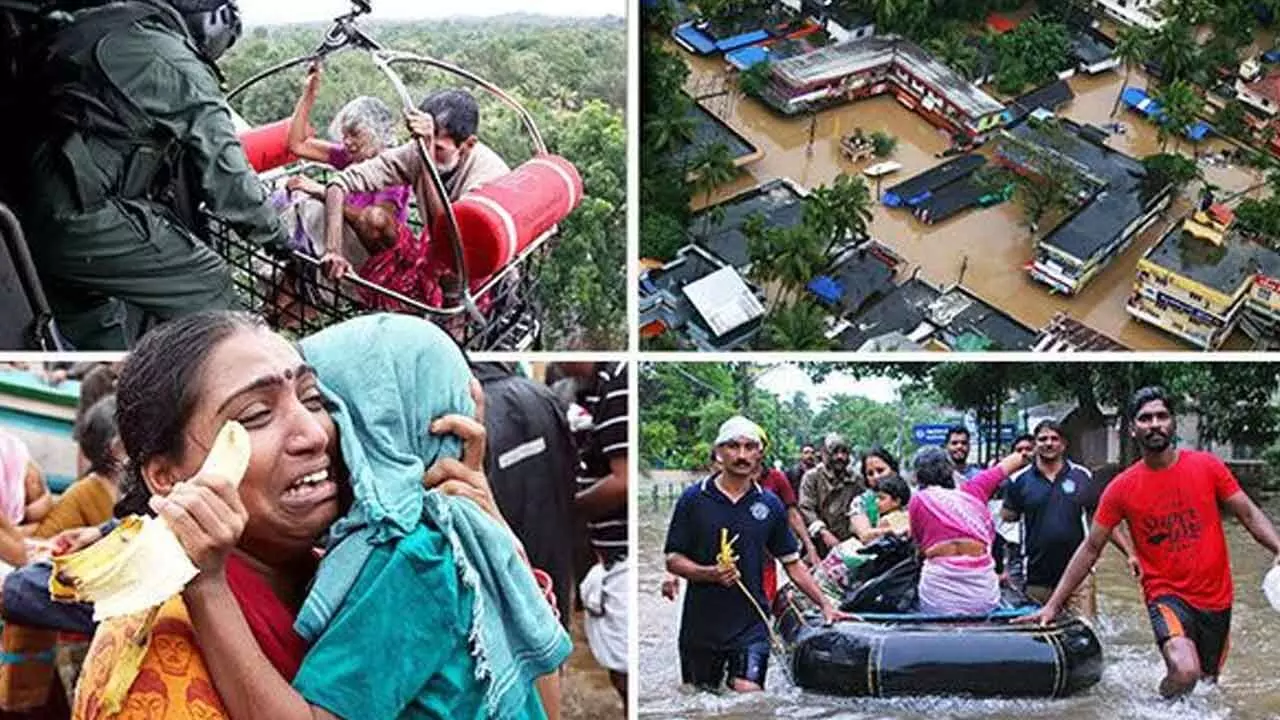Floods in Kerala and Tripura show that prompt action can reduce damages caused by natural calamities
Ironically, before 2014, the government’s focus was on a rescue-centric approach to disasters
Floods in Kerala and Tripura show that prompt action can reduce damages caused by natural calamities

Dangers like avalanches, landslides, floods and storms will keep increasing everywhere due to climate change. Keeping this in mind, governments and the society should move firmly towards the goal of zero-casualty
Nature's fury wreaked havoc in Kerala and Tripura recently and caused widespread devastation. Floods, heavy rainfall and landslides led to substantial loss of life and property. The severity of the situation was heightened because the two states were simultaneously impacted by similar natural calamities.
In the midst of this crisis, the National Disaster Response Force (NDRF) teams in Kerala and Tripura worked tirelessly 24x7 conducting rescue and relief operations, while Union Home Minister Amit Shah monitored the efforts.
On a fateful July 30 night, a landslide in Wayanad, Kerala, resulted in a significant number of casualties within hours. The incident caused extensive damage to both movable and immovable assets, with villages in the district bearing the brunt of the destruction. This was the deadliest disaster in the state since 2018.
Recognizing the gravity of the situation, Amit Shah took charge of relief and rescue operations and coordinated with relevant departments of the central government and deployed NDRF, Army, Air Force, Navy, fire services and civil defence teams to the affected areas along with 1200 relief workers.
In Kerala, 58 NDRF teams are working in challenging conditions to tackle this century’s worst floods. Additional NDRF teams were deployed from nearby locations to rescue stranded families while they also set up medical camps at various locations to provide immediate treatment. A team of senior and expert doctors was also dispatched to the affected areas to provide medical help, while over 100 ambulances were rushed to the affected areas.
The landslides completely severed transportation routes in Kerala. In a remarkable effort, the Indian Army's engineering team worked tirelessly for 71 hours to construct a 190-foot-long Bailey bridge, which facilitated transportation of heavy machinery and ambulances, significantly accelerating rescue efforts.
In addition, the central government sent an inter-ministerial central team to assess the situation.
The Kerala disaster claimed over 415 lives, around 200 persons went missing, while hundreds of houses, resorts, schools, places of worship and infrastructure were reduced to rubble.
It is regrettable that even amidst such a massive tragedy, the opposition continues to question the central government.
Responding to questions from opposition leaders in Parliament, Amit Shah stated that the Centre had repeatedly cautioned the Kerala government about the likelihood of a natural disaster striking the state following heavy rainfall. The first warning was issued on July 23 and the same day nine NDRF teams were deployed to the state, he said.
Shah lamented that the state government did not heed the warnings, which led to a higher toll.
"I don't want to blame anyone. This is a time to stand firmly with the people of Kerala and the government. I want to assure the House that, irrespective of party politics, the Narendra Modi government will stand like a rock with the people and the government of the state. There should be no doubt about it," Shah said.
It is known to all that before 2014, the focus was on a rescue-centric approach to disasters. However, after 2014, the central government has been moving towards a zero casualty approach.
Meanwhile, in Tripura, the floods caused significant damage. The Home Ministry, in addition to deploying boats and helicopters, sent 11 NDRF teams to assist the state government in relief and rescue operations. Shah was continuously monitoring the situation with Tripura Chief Minister Manik Saha. The central government approved the release of Rs 40 crore for the flood-affected Tripura on August 23. To assist the state government in relief efforts, 11 NDRF teams, three army detachments, and four IAF helicopters were deployed by the Centre.
NDRF teams brought thousands of affected people to safe locations. About 65,000 people have taken refuge in 450 relief camps. Heavy rains and landslides destroyed homes, properties, and roads. The central government has also dispatched boats and helicopters to assist the local government in relief and rescue operations.
One has to accept the fact that dangers like avalanches, landslides, floods and storms will keep increasing everywhere due to climate change. Keeping this in mind, governments and the society should move firmly towards the goal of zero-casualty by using scientific principles for the development of the National Disaster Response Force (NDRF).
The central government's support to the state governments in Kerala and Tripura during this crisis clearly demonstrates that, despite political differences, India stands united during times of adversity. The Centre remains steadfast in its support for the affected states, irrespective of which party is in power.
(The author is Delhi-based senior journalist and writer. He is author of Gandhi's Delhi which has brought to the forth many hidden facts about Mahatma Gandhi)

